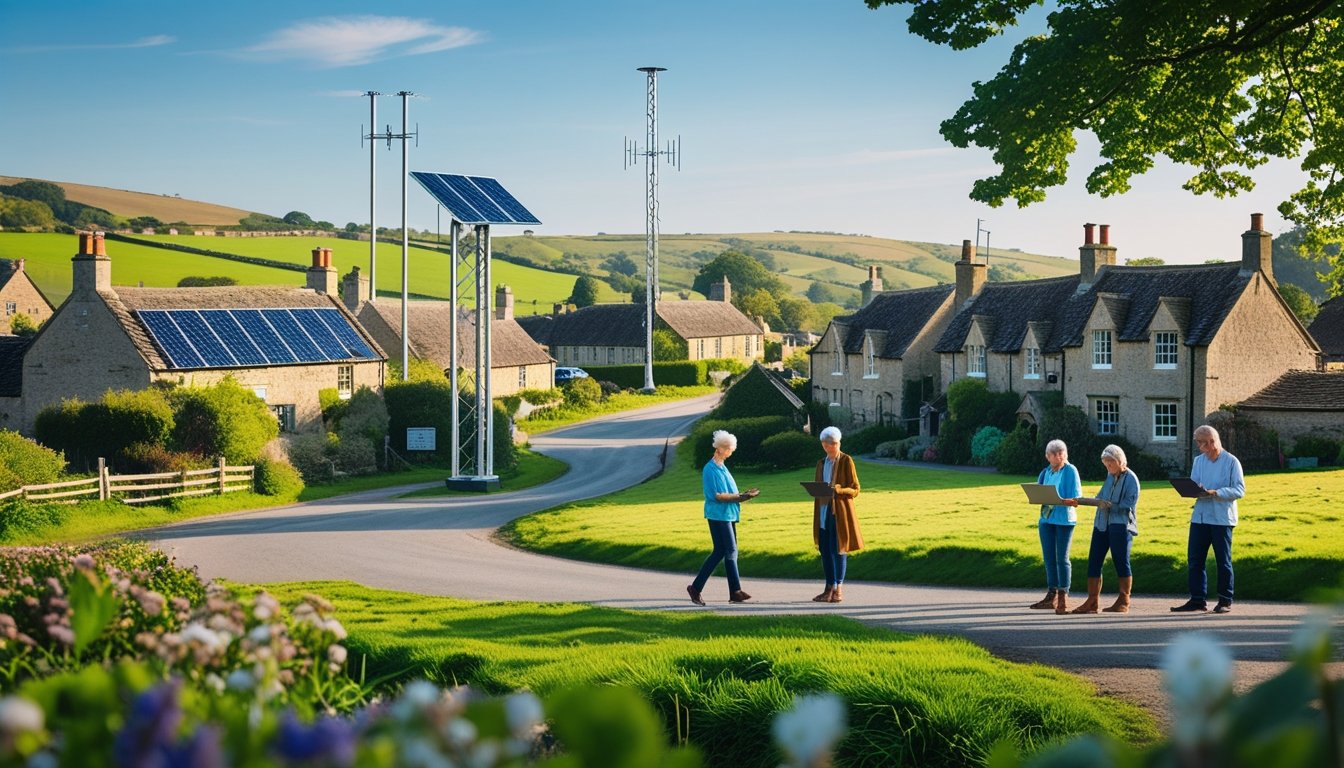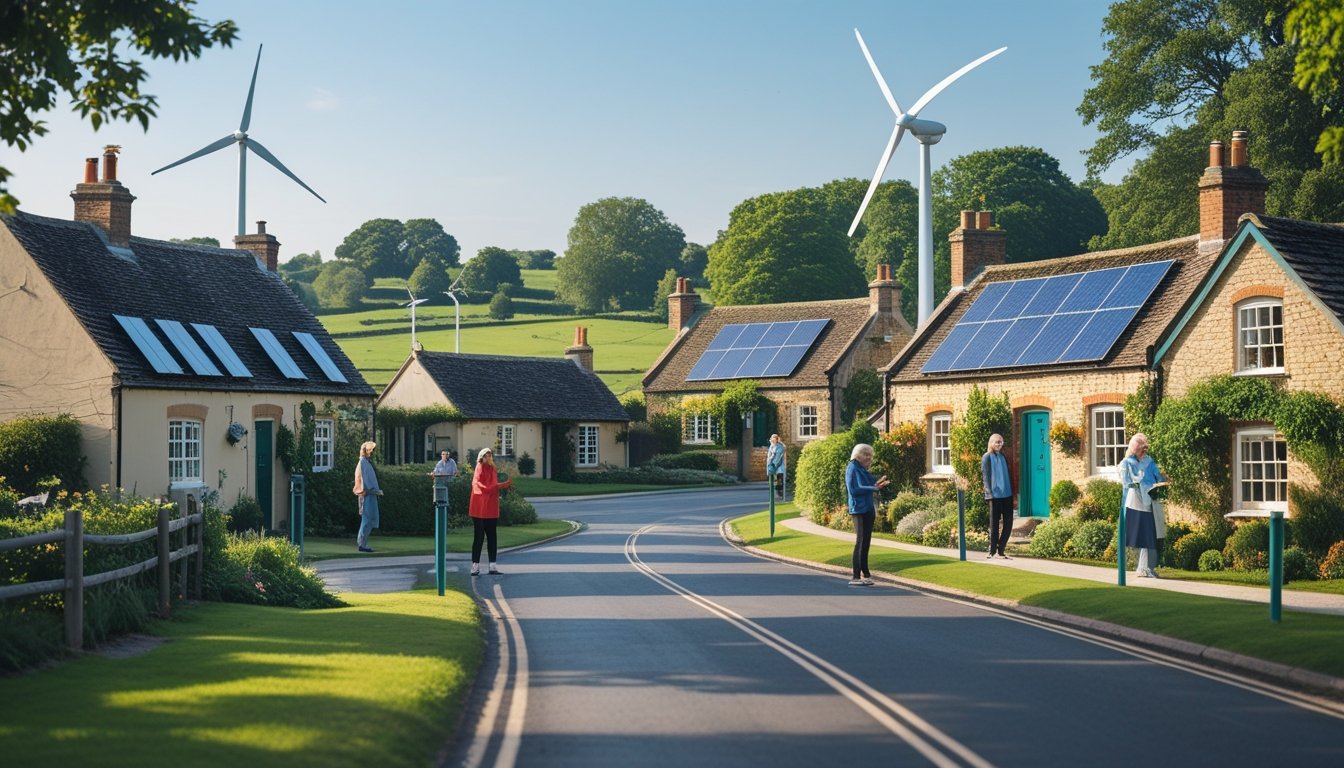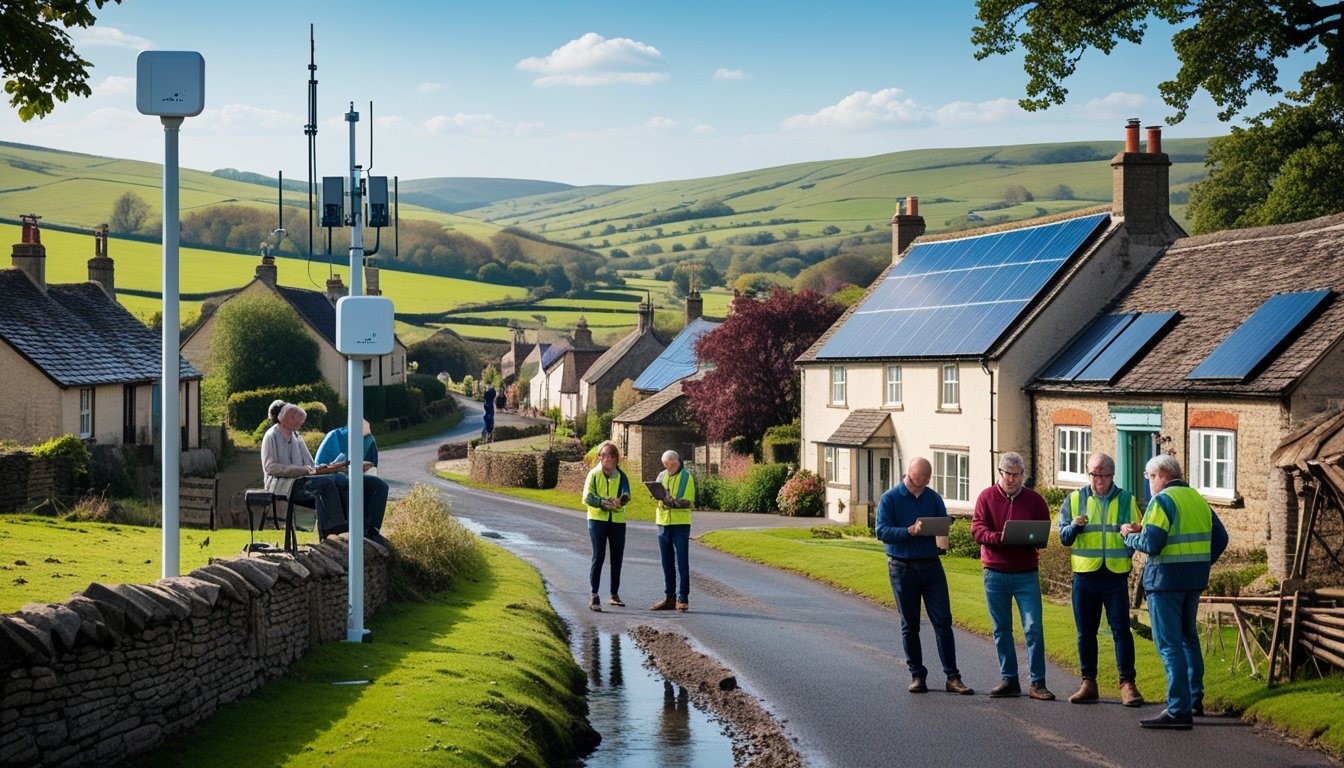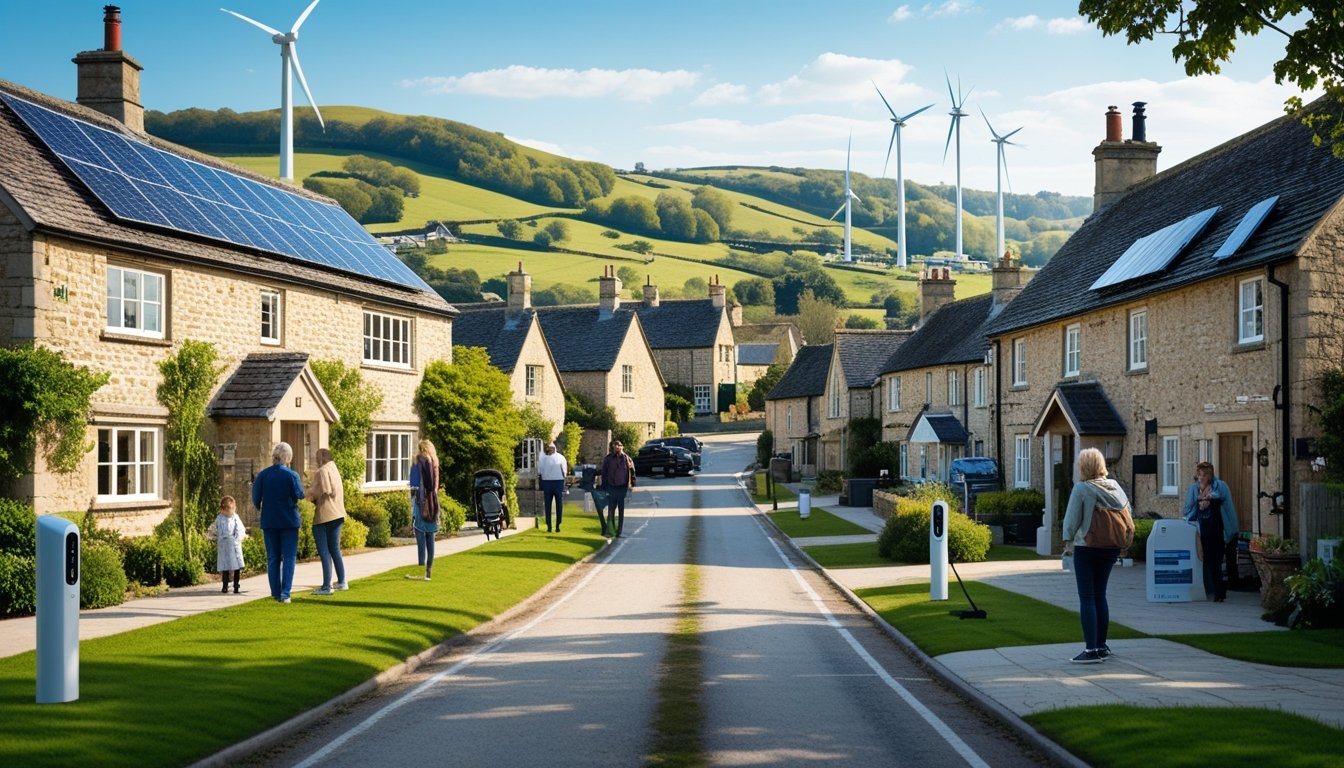Late updated: 07 Oct 2025 12:10
Written by: Oliver Bennett
Sustainable Connectivity Solutions For UK Villages: Enhancing Rural Access
Sustainable connectivity is a pivotal issue for UK villages, driving both environmental and economic progress. Many rural communities are still grappling with limited internet access, hindering their ability to thrive in an increasingly digital world. The integration of innovative technologies—including fibre, 5G, and hybrid solutions—offers a path to bridging the digital divide for these remote areas.

Government initiatives and partnerships with private enterprises are making significant strides towards enhancing rural connectivity. By adopting eco-friendly connectivity options, such as those powered by renewable energy, we can promote greater social inclusion and spur economic growth. As the demand for sustainable development grows, the momentum to ensure everyone benefits from technological advancements becomes ever more crucial.
Key Takeaways
- Innovative technologies bridge rural connectivity gaps.
- Eco-friendly solutions promote social inclusion.
- Government and private partnerships boost connectivity efforts.
Core Sustainable Connectivity Solutions for UK Villages

The focus on sustainable connectivity in the UK’s villages involves deploying advanced technologies like superfast broadband and 5G networks. Community engagement and public-private partnerships play a critical role in strengthening connectivity infrastructure. Let's explore these core solutions in detail.
Superfast Broadband Initiatives
Superfast broadband is transforming rural connectivity by delivering high-speed internet access, which is crucial for economic and social development. Service providers like BT are actively upgrading infrastructure to offer speeds of up to 300 Mbps, facilitating activities such as remote work, online education, and telehealth services.
Government grants and schemes have accelerated installation in less accessible areas. Broadband Delivery UK (BDUK), for example, provides funding and guidance to expand coverage. These initiatives are bridging the digital divide, enabling equitable access to digital resources in rural communities.
5G Deployment in Rural Communities
The rollout of 5G networks is pivotal in enhancing connectivity. With low latency and high reliability, 5G supports various sectors, including agriculture, healthcare, and tourism in rural regions. It fosters innovative solutions like IoT applications and smart farming techniques, which improve efficiency and productivity.
Pilot projects funded by the UK Space Agency have tested hybrid connectivity, integrating satellite and terrestrial technologies. By expanding these networks, we anticipate a marked increase in rural socio-economic activities, contributing to sustainable growth and resilience.
Community-Led and Public-Private Approaches
Community engagement is essential in implementing effective connectivity solutions. Public-private partnerships leverage both governmental support and private sector expertise. Local councils, for instance, collaborate with telecom companies to tailor solutions that address specific needs.
Rural Digital Hubs, often initiated by local stakeholders, provide digital services and training, empowering residents with the skills needed in a digital economy. These collaborative efforts enhance not only connectivity but also community resilience, ensuring inclusivity and sustainability.
By focusing on these collaborative solutions, we can ensure that UK villages remain connected and capable of thriving in a rapidly digitalising world.
Key Factors Driving Sustainable Connectivity in Rural Areas

In addressing connectivity challenges in rural areas, we focus on bridging the digital divide, implementing sustainable and low-carbon strategies, and enhancing the life of community residents. These elements are crucial to ensure that rural areas can thrive both economically and socially, in line with sustainability goals.
Bridging the Rural-Urban Digital Divide
Bridging the digital divide between rural and urban areas is a pressing necessity. Urban centres typically enjoy robust connectivity, whereas rural regions often lag behind, creating disparities in access to online services. To address this imbalance, initiatives like the BT programmes in the UK aim to expand broadband infrastructure. By enhancing connectivity, we enable equal opportunities for education, healthcare, and business, fostering development and reducing economic gaps.
Affordable broadband solutions and wireless technologies tailored for varying geographical challenges are part of our plan. Coupled with governmental policy support, these efforts can vastly improve connectivity in rural areas. By prioritising underserved communities, we can achieve more inclusive growth and resilience.
Sustainability Considerations and Low-Carbon Strategies
Sustainability is at the core of our approach, reflecting the need for responsible energy practices in enhancing connectivity. Traditional infrastructure can be energy-intensive; thus, we adopt low-carbon strategies such as solar-powered base stations and energy-efficient equipment.
Exploring green technologies not only reduces emissions but also mitigates costs, benefiting both service providers and users. We continuously explore innovative solutions which minimise environmental impact, aligning rural connectivity efforts with sustainability goals. By integrating renewable energy sources into our connectivity infrastructure, we reduce dependency on traditional power sources, promoting a more sustainable future.
Supporting the Vitality of Rural Communities
Strengthening community vitality is key to sustainable development. Connectivity services play a pivotal role in economic and social inclusion. Access to broadband empowers residents by facilitating job opportunities, telemedicine, and remote education.
The stimulation of local economies through connectivity fosters vibrant and resilient communities, ensuring that rural areas are not left behind in digital advancements. We support initiatives that promote social capital and empower communities to harness technological advancements to improve daily life. By prioritising connectivity, we drive the creation of smart, sustainable rural environments that support wellbeing and economic growth.
Frequently Asked Questions

In addressing the connectivity challenges faced by rural UK villages, it's essential to explore various options from sustainable technologies to funding schemes. We also need to consider environmental impact and the role of community-led initiatives in enhancing broadband services.
What are the most effective technologies to provide internet access to rural UK areas?
Several technologies stand out for rural internet access in the UK. Full Fibre broadband and advancements in 5G connectivity are playing a vital role. Additionally, eSIMs and emerging solar-powered mobile networks offer innovative solutions to overcome geographical challenges. These technologies are crucial in bridging digital divides and improving connectivity.
How can UK villages ensure long-term sustainability in their connectivity projects?
Maintaining sustainability involves integrating eco-friendly technologies like SMART turbines and renewable energy sources. By harnessing green energy, villages can reduce their carbon footprint. Collaborating with sustainable tech developers and prioritising energy-efficient equipment are important steps towards achieving long-term goals of resilience and sustainability in connectivity projects.
What funding schemes are available to support the development of internet infrastructure in rural UK communities?
Several funding initiatives are available to foster internet infrastructure. The UK government and private sector partnerships provide grants and financial assistance. Programmes like the GSMA Innovation Fund offer support for deploying sustainable broadband networks. It's essential to stay informed about these schemes to effectively plan and implement connectivity projects in rural areas.
What are the environmental considerations when implementing connectivity solutions in protected areas?
Implementing connectivity in protected areas requires an understanding of local ecosystems. Solutions must minimise disruption to wildlife and landscapes. Options like camouflage technology or low-impact infrastructure can help. Renewable energy sources further reduce environmental harm. Collaborative planning with environmental agencies can ensure that connectivity projects align with conservation goals.
How do community-led broadband initiatives compare with commercial provision in terms of service quality?
Community-led broadband initiatives often offer tailored solutions that address specific local needs effectively. These projects foster community engagement and ownership, often resulting in high service satisfaction. In contrast, commercial providers may deliver broader services but might not meet the nuanced requirements of individual rural communities. Each approach has unique advantages and challenges.
What role do local governments play in facilitating broadband expansion to remote UK villages?
Local governments are instrumental in advancing broadband expansion. They can facilitate planning and regulatory approvals and act as mediators between communities and service providers. By providing vital funding and resources, councils support infrastructure development. Their involvement ensures that expansion efforts align with broader regional development plans, benefiting remote communities significantly.
